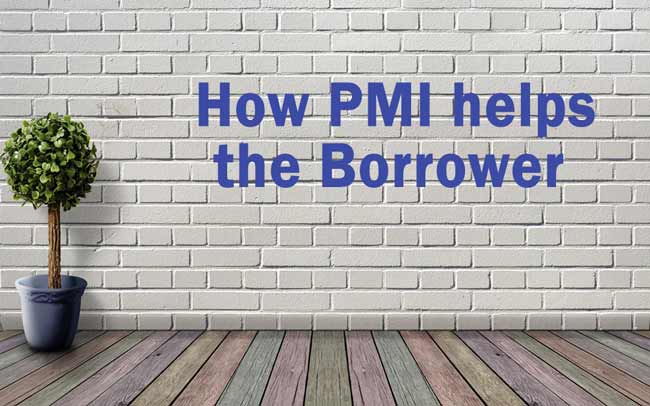
Why PMI is on the Road to Wealth for California Homeowners
Today’s homeowners are building wealth like never before. Perhaps it is the increasing population in major cities and urban sprawl. It is not always so easy to pinpoint the exact cause when there’s numerous variables.
The average appreciation over the course of 2018 should be 4.8%, which is still greater than the “normal” appreciation of 3.6%. According to Zillow, the median home value in Orange County in 2019 is $725,400. Home values in the county have risen 3.4% in 2018 and Zillow forecasts they will increase by 2.4% by next year. That amounts to $17,409 and six percent overall.
That means the person who purchased the average home in Orange County two years ago will have “made” over $34,200. In June of 2015, the median price was $629,5001 with predictions of slowing appreciation.
So, if you bought four years ago you’d be close to $100,000 in appreciation.
The interesting thing is that you still hear some experts saying you should only buy a home when you have a 20% down payment. Coming in with a 20% down payment may be more unsafe than putting a smaller down payment.
What is private mortgage insurance (PMI)?
Basically, the lender’s insurance plan when a loan goes into default is what Private Mortgage Insurance (PMI) is. However, it is paid for by the homeowner and benefits the lender.
This is where most home buyers get stuck on them paying additional fees to the lender. Their argument is It should benefit the homeowner since they are paying for it. The truth is PMI does not only helps the lender but also the borrower.
PMI benefits the buyer in a number of ways, most noticeably through reducing the down payment required to buy a home. In many parts of California, a home costs more than $500,000. Let’s think what would happen if mortgage insurance was not offered to borrowers.
The homeowner would need to bring in $100,000 in addition to closing costs to purchase a home. In a world without any PMI, almost all lenders would demand 20-percent down, without any exceptions.
In an effort to cut their losses , lenders established the twenty-percent minimum down payment. Should the borrower default on the loan payments because of loss of job, a serious medical condition, or other significant matter it gives the lender sufficient equity to resale the home.
By and large, lenders suffer a loss when they foreclose on a borrower. This is where mortgage insurance comes into play. Those losses are repaid to the lender with PMI. Instead of trying to save $100,000 for who knows how many years they can come in with a lot less to buy a home with PMI.
PMI actually helps the buyer benefits as opposed to negatively hurting them. The reason is the homeowner starts building wealth as time passes.
Homeownership is the first method of creating wealth in the U.S. Although some people teach others to buy real estate as a get-rich quick scheme it works a lot better as an investment that pays itself off over time, even with all the cyclical housing declines.
According to the government lending agency FHFA, home values are up more than 330% since 1996. That means the average OC home priced at $214,9002 in January 1996 is now fetching $725,000 today.
Since that time, the Bureau of Labor Statistics states inflation has gone up 60%. A first-time home buyer in 1996 has far outpaced inflation, by a 260% difference in a return on investment.
The owner holds a valuable asset that many want and the mortgage balance is nearing its final years. On the other hand, a person who decided to rent from 1996 until present day, pays continually-increasing rents.
To make matters worse, the renter may not have any sizeable asset unless he or she contributed to a retirement account or other investment regularly over those twenty years. Most are not planning into their future.
What better investment that the place you live? It turns into a mandatory savings account. Housing expenses are required whether you rent or own. But when you own, you deposit a small chunk toward your future wealth.
So what does PMI have to do with this? It starts the process of building wealth sooner. Before you know it, you can be in the black of rising home values as opposed to in the red. You can cancel mortgage insurance on a conventional loan when you reach 78% loan-to-value.
Here’s a scenario where a California first-time home buyer bought a home in Orange County with 10-percent down for $575,000 in 2014 and after 5 years they are in the following situation:
• Present Home Value: $700,000
• Principal remaining: $470,000
In five years, the home has appreciated 18% or $125,000, and the PMI sets you back $7,200. That’s a 5-year return on investment of 1,636%.
It’s fair to say that would be unimaginable to make that type of investment return in the stock market in those same five years. Yet there’s thousands of home buyers in SoCal who are doing this.
FHA loans offer borrowers non-private mortgage insurance. The government backs FHA loans, since they’re not provided by private PMI companies like MGIC and Radian. One of the benefits of FHA mortgage insurance is they tend to be less than PMI companies.
A drawback of FHA mortgage insurance is it remains for the duration of the loan. No need to worry though. The majority of homeowners refinance into a conventional loan after a few years by and get rid of their FHA mortgage insurance.
Home buyers should compare conventional and government loan programs and mortgage insurance options. Not everyone will be convinced that private mortgage insurance is good. Just check it out for your situation before declining it.
Sources:
1. OC Register July 16, 2015
2. L.A. Almanac – 1996